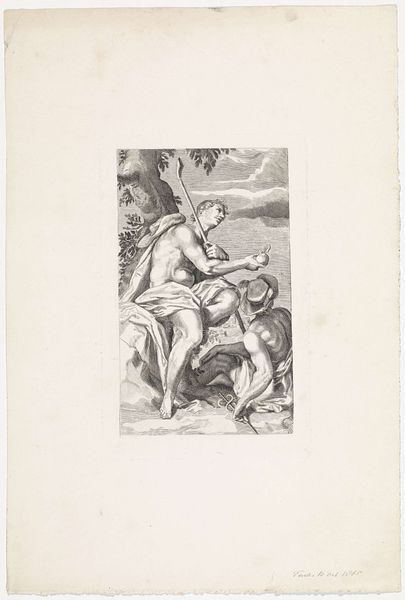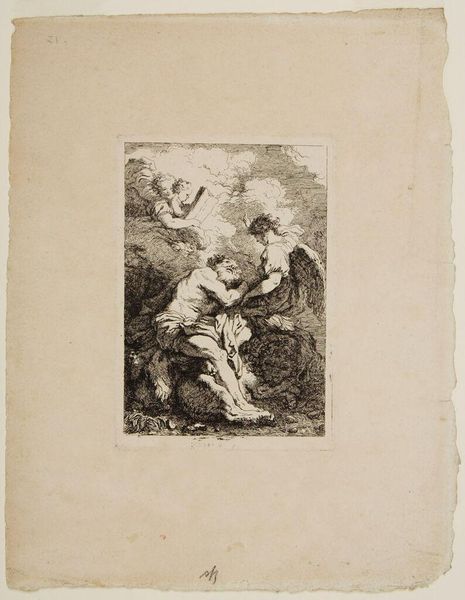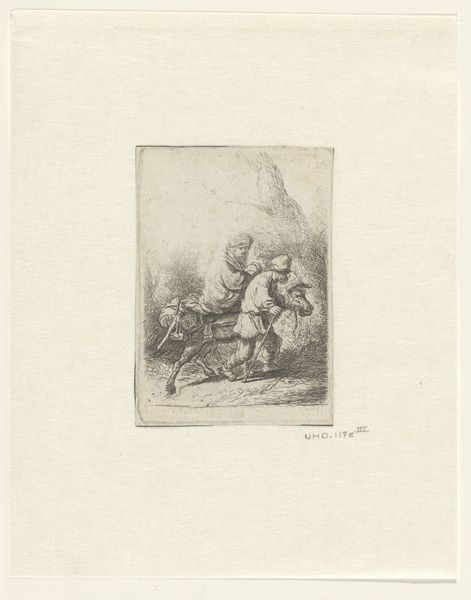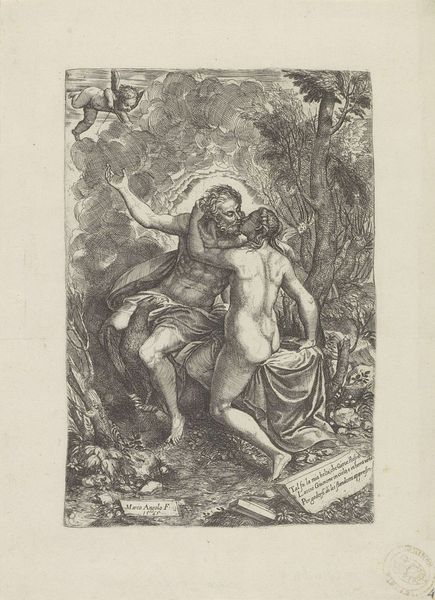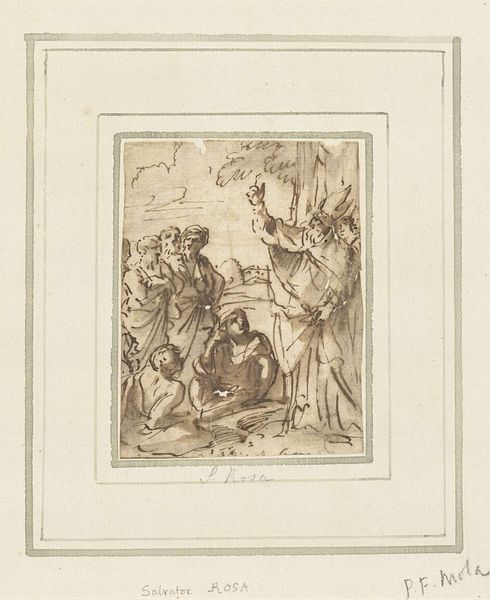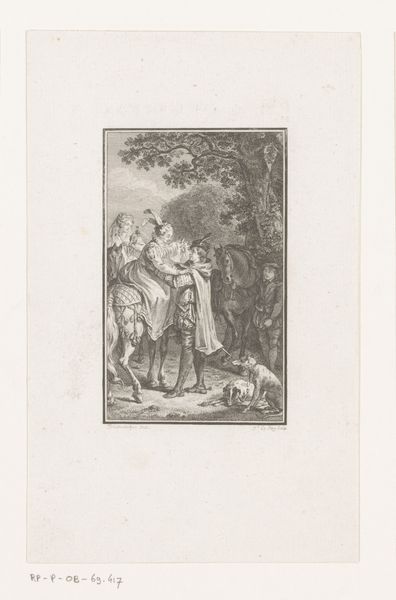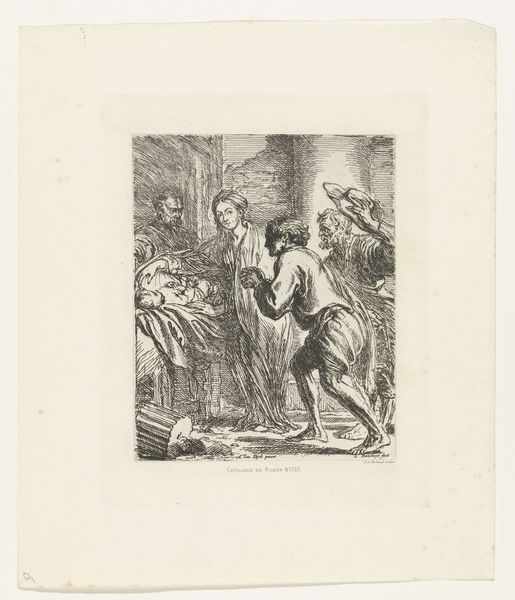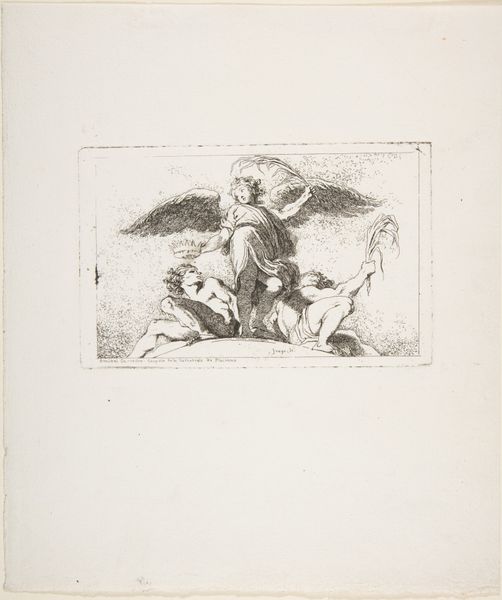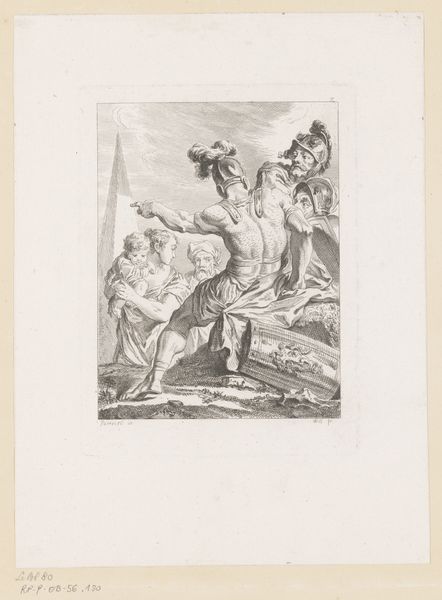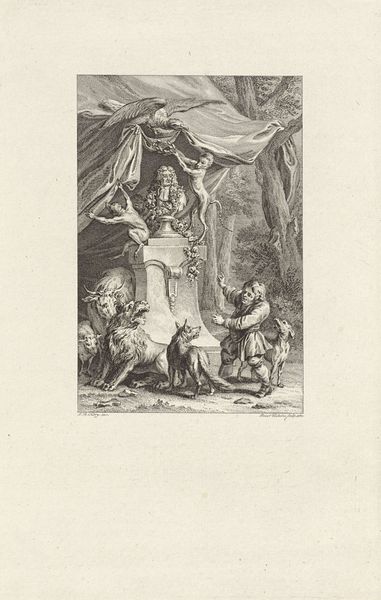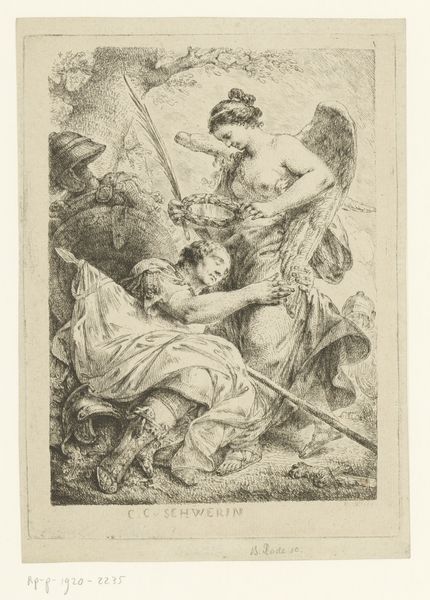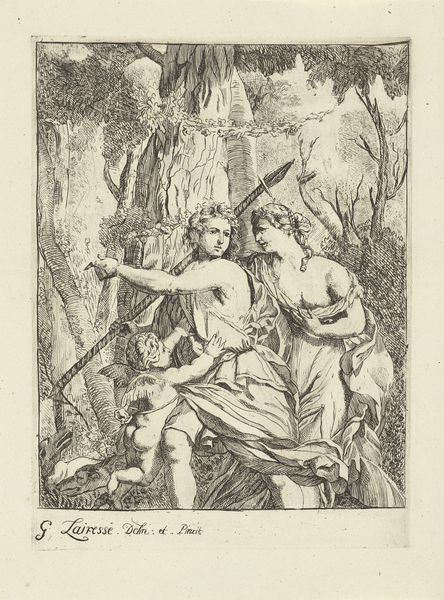
Dimensions: height 118 mm, width 87 mm
Copyright: Rijks Museum: Open Domain
Editor: Here we have Fragonard’s "Engel wijst Hagar de waterbron," created between 1763 and 1764. It’s an etching printed with ink on paper, and is currently held at the Rijksmuseum. The delicate line work gives it an ethereal quality. What story can we tell about how Fragonard made this? Curator: We should think about the materials Fragonard used. Paper, ink, and the etching plate are all commodities that were produced, distributed, and consumed within a specific economic system. His access to these materials reveals aspects about his place in society, as do the methods employed to distribute the image via printmaking, creating copies for a burgeoning art market. Editor: So, by studying the materials, we can almost reverse-engineer Fragonard's process, the steps involved? Curator: Precisely. We should consider labor too. Who made the paper? Who mixed the inks? What was their social standing? Etching itself was a skilled craft, so consider the labor of the artist and, perhaps, workshop assistants. Were these tasks gendered in any way, like the making of lace in that period? Editor: I hadn’t thought about the etching plate itself. The time and skill needed to create it must’ve impacted the final outcome, right? The precision of line, the shading… Curator: Absolutely! Consider how many prints could be made before the plate degraded. What material was it made of? Was it a new plate, or was he reusing something else? All these minute production details influence not only the artwork's appearance but its value and availability within society. These factors affected its impact at the time, and even impact our viewing today! Editor: Looking at it that way, it really reveals a much broader perspective. It encourages us to explore more than just the aesthetic or narrative value of the image. Curator: Yes. Understanding the means of production contextualizes the art in the broader social fabric from which it emerged and its movement in commerce afterwards.
Comments
No comments
Be the first to comment and join the conversation on the ultimate creative platform.
